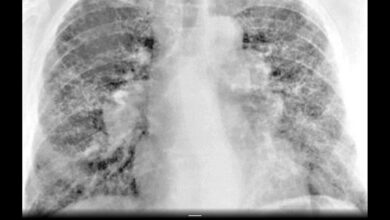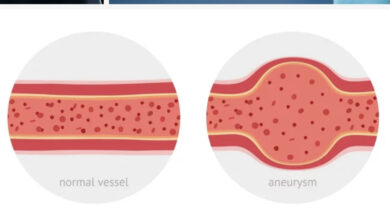
This blog article is inspired by information I received from friends in Indianapolis who recently told me their neighbor had been diagnosed with a malignant brain tumor. Coincidentally, the current issue of JAMA, the Journal of the American Medical Association, had a nice review article on “Glioblastomas and Other Primary Brain Malignancies in Adults.” That led me to research the subject of brain cancer and share what I learned with my readers. By writing this article my limited knowledge of brain malignancies was definitely broadened.
Fortunately, brain cancers are not terribly common. (Notice, I avoided the term brain tumor because that term does not specify if the lesion is benign or malignant. The subject here is malignancies.) Each year approximately 85,000 adults are diagnosed with brain tumors. Twenty nine percent, or under 25,000, of these are malignant; put another way, 7 people per 100,000 annually are diagnosed with brain cancer.
The majority (80%-85%) of adult brain malignancies are Gliomas. Gliomas are further subdivided based on characteristics determined by microscopic examination of a biopsy sample. The sub-types are Glioblastomas, Astrocytomas, and Oligodendrogliomas. Forty nine percent of brain malignancies are Glioblastomas. Another 30% includes Astrocytomas and Oligodendrogliomas. Less commonly, central nervous system lymphomas (7%), malignant ependymomas (3%), and malignant forms of menigiomas (2%) make up the bulk of the others.
I had a few patients who had benign meningiomas found accidentally when I was working them up for something else. A meningioma is a tumor developing in the meninges, the membranes that cover the surface of the brain. Most meningiomas are benign as was the case with those affecting my patients. None of these “tumors” ever gave their host any problems and never required surgery. Conversely, I had a male patient in his late twenties who had headaches after being in an auto accident. A few days after I saw him for headaches, he had a seizure which led to discovering he had a Glioblastoma. Tragically, he died six months later.
Brain malignancies can be present for years before they cause symptoms. That’s troubling. Most brain cancers (74%) are diagnosed after the patient has a seizure. The old term, grand mal seizure, is what I would use to describe this disturbing event. The patient suddenly loses consciousness, has rhythmic jerking movements of the extremities, head, and neck, and loses control of bladder, and sometimes, bowel function. Afterward, the patient is difficult to arouse, but gradually regains function.
A mere 50% of brain cancer patients have headaches. How many patients go to the doctor fearing their headaches are due to a brain tumor? The majority. Attention is raised, however, if the headache is accompanied by a neurologic symptom such as loss of a part of the field of vision, balance problems, personality changes or confusion, movement problems and loss of sensation in the extremities, double vision, abnormal gait, involuntary eye movements, and many more symptoms. The brain is divided into 9 anatomic sections. Each section has a specific neurologic function so the location of the cancer determines the neurologic symptoms the patient expresses.
Astute physicians can often tell the location of the cancer by the symptoms the patient displays, but MRI scanning is essential for accuracy. MRI is the gold standard of diagnostic tools for brain tumors, but an accurate diagnosis, and determination if the tumor is benign or malignant, requires a biopsy of the tumor tissue. A biopsy is done under general anesthesia and has significant risk depending on the location and accessibility of the tumor. If the tumor is easily accessible, it is biopsied by being completely removed. Less accessible tumors are biopsied by specialized techniques that prevent damage to surrounding normal brain tissue.
Treatment varies depending on the type of tumor and it’s location. Surgery, chemotherapy, radiation therapy, and combinations thereof are the treatments available for brain cancer. Glioblastomas are usually treated with radiation and chemotherapy. The article in JAMA has a detailed diagram of treatment options for the various types of brain cancers. It includes specific drug combinations and doses as well as options for radiation therapy.
The average five-year survival following diagnosis of a malignant brain tumor is about 36%. Older patients, however, have poorer prognoses. For patients over age 40, the average five-year survival drops to 21%, but certain types of cancers have 5-year survival rates of only 7%. The cancer tissue type, tumor location, and age of the patient are all factors in determining survival statistics. The success of chemotherapy and radiation therapy unfortunately varies from patient to patient even if the tissue diagnosis is the same. Everyone is different so response to treatment differs as well.
The success of treatment of any problem with the brain and spinal cord is the ability of the drug to pass the Blood-Brain Barrier (BBB). The BBB is a feature of the immune system found only in blood vessels in the brain and spinal cord. Specialized cells in the walls of these vessels form a functional and structural barrier that block harmful substances (bacteria, viruses, fungi, parasites, and many medications) from passing into the brain if they are circulating in the bloodstream. The BBB does allow oxygen, water, carbon dioxide, general anesthetics, and fat-soluble substances to pass, but unfortunately, allows narcotics (cocaine, morphine, methamphetamines, alcohol, heroin, and nicotine) to pass unimpeded. Thus the significant problem with drug addictions. Water-based/water soluble substances do not pass the BBB.
Chemotherapeutic drugs must be designed to pass the Blood-Brain Barrier or they are ineffective. How that is done is beyond my knowledge or the scope of this blog, but its importance cannot be ignored.
The person mentioned in the first paragraph of this article thought he was well until he had a seizure. A trip to the hospital for treatment and evaluation resulted in diagnosing a glioblastoma. I don’t know the man’s age or location of the tumor, but I sensed his prognosis is not good. Brain cancer, any cancer, is a terrible problem to have. We must be attentive to the patient’s symptoms, be diligent in treatment and follow-up, and hope for the best.
Reference: Schaff LR, Mellinghoff IK. Glioblastoma and other Primary Brain Malignancies in Adults A Review. JAMA 2023 Feb 21;329(7):574-585.




